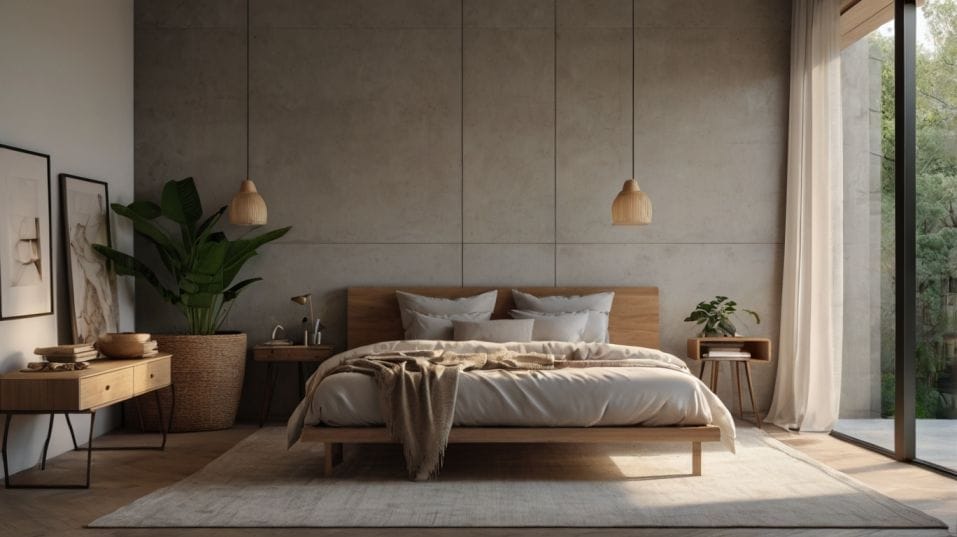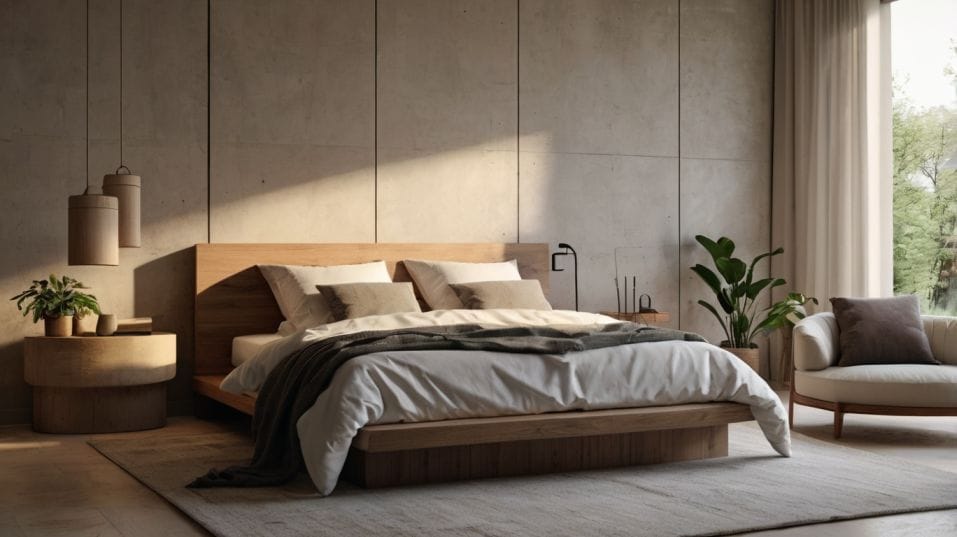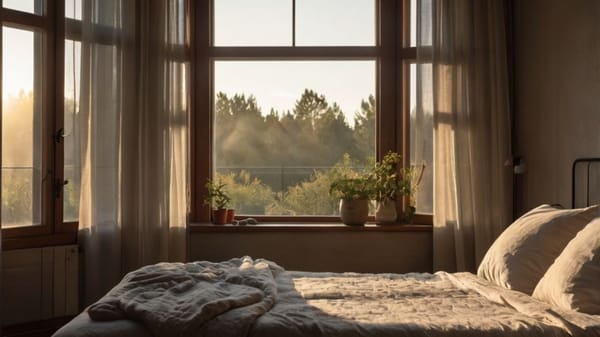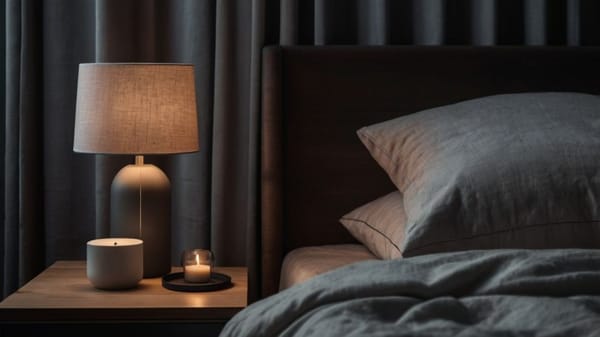How to Design a Minimalist Sleep Sanctuary
Transform your bedroom into a sleep-boosting sanctuary. Discover how minimalism clears mental clutter and improves deep, restful recovery.

What if your bedroom could help you sleep better—just by having less in it? Forget the high-tech gadgets and designer bedding. The key to real rest is subtraction.
A minimalist sleep sanctuary clears away the clutter and sends a direct signal to your brain: it’s time to power down.
Backed by neuroscience and built for calm, this guide shows you how to create a space that works for your sleep—not against it.
Why Minimalism Works for Sleep
Let’s start with your brain. It’s wired to seek patterns and scan for threats—even when you’re winding down. Visual clutter sends mixed signals.
A 2011 Princeton study found that too much visual input makes it harder for the brain to process information and focus.
UCLA researchers also showed that disorganized spaces increase stress hormone levels. That’s not what you want flooding your system before bed.
Minimalism strips away that chaos. It gives your nervous system fewer variables to manage.
When your environment is clean, quiet, and consistent, your brain knows it’s time to shift out of survival mode and into recovery mode. That shift is what quality sleep depends on.
This isn’t just about having fewer things. It’s about removing friction—so your body can downshift naturally and your mind can stop racing.

Step Into Simplicity: Declutter With Intention
Your bedroom should only serve one function: sleep. Maybe two, if we’re being real. But it’s not an office, a gym, or a storage unit.
When you walk in and see a laptop, a pile of laundry, and your tax paperwork—it’s no wonder your brain can’t shut down.
Start by clearing anything that doesn’t actively support rest. That includes:
- Work-related gear
- Unused furniture
- Extra décor
- Exercise equipment
- Screens (yes, even the “relaxing” ones)
If you’re not ready to do a full clean-out, box up the maybes and store them elsewhere for a month. If you don’t miss them, you don’t need them.
Keep the space open and intentional. A clear floor and tidy surfaces tell your brain it’s safe. That’s more powerful than any supplement.
Master the Light
Light controls your sleep more than you think. Your circadian rhythm—the body’s 24-hour clock—is synced by light exposure.
Too much light at the wrong time, and your brain delays melatonin production, making it harder to fall asleep and stay asleep.
Here’s what to do:
- Cut overhead lights after sundown. They signal “daytime” to your brain.
- Use low-watt, warm-toned bedside lamps or wall sconces.
- Switch to amber or red bulbs if you’re serious about sleep optimization.
- Blackout curtains aren’t optional if outside light bleeds in.
- Ditch glowing electronics or cover them—yes, even the tiny LED on your charger.
Morning light matters too. When you wake up, get direct sunlight within 30 minutes. It resets your circadian clock and helps you fall asleep faster that night.
Sound: Make It Predictable
The ideal sleep soundscape isn’t silence—it’s consistency. Your brain tracks changes in noise patterns even while unconscious. That’s why a sudden car alarm wakes you, but a steady fan doesn’t.
To manage nighttime sound:
- Use a white noise machine or a fan to drown out disruptive noise.
- Rugs, curtains, and upholstered furniture absorb sound naturally.
- If you share walls or live in a noisy building, try earplugs or a sleep headband with embedded audio.
Don’t underestimate how much better you’ll sleep when your brain isn’t waiting for the next disruption.
Choose Comfort Over Flash
A minimalist room doesn’t mean bare or uncomfortable. It means thoughtful. Your bed should be the most functional, comfortable item you own.
Key upgrades:
- A medium-firm mattress that keeps your spine aligned
- A pillow that matches your sleep position (side, back, stomach)
- Natural-fiber sheets like cotton, linen, or bamboo—cooling and breathable
- A comforter or blanket that suits your climate. Don’t overheat.
You don’t need fifteen throw pillows. You need one setup that works. When your bed is dialed in, your body settles faster—and stays asleep longer.
Ban the Tech
Screens are your sleep enemy. Not just because of blue light (though that’s part of it), but because they mess with your focus, your hormones, and your ability to unwind.
Here’s how to take back control:
- Remove your phone from the bedroom
- Use an old-school alarm clock. No screen. No swiping.
- Charge your devices in another room
- No TV. Not even “background” shows. It’s not neutral—it’s noise.
This change alone can reset your sleep quality within a week. It forces you to create a wind-down ritual that’s not dependent on endless scrolling or late-night email checks.
Add Purpose, Not Stuff
Minimalism doesn’t mean sterile. You can personalize the space—just make sure everything in the room earns its spot.
Smart additions:
- One piece of calming, abstract art (not too stimulating)
- A plant like snake plant or peace lily for air quality
- A scent diffuser with lavender, cedarwood, or vetiver
- A soft, neutral rug for warmth and acoustic control
Everything should serve a function: either it calms your senses or supports your sleep physiology.
Create a Shutdown Ritual
The room is just one part. The way you enter that room matters just as much.
Start treating your bedroom like a signal. When you cross the threshold, the day ends. No work, no stimulation, no high-stress conversations. The space cues your brain that it’s safe to let go.
You might try:
- A warm shower 60–90 minutes before bed (it cools your core temp and boosts melatonin)
- Gentle stretches or mobility work
- A paper book or meditation app (outside the bedroom)
- Journaling to unload mental clutter before you walk in
The goal is to set a clear boundary. When you’re in that room, you're done for the day.
Final Thoughts
A minimalist sleep sanctuary is simple by design, but powerful in effect. You remove distractions, reduce sensory overload, and give your body what it needs to recover at night and perform during the day.
No gimmicks. No hacks. Just science-backed choices that turn your space into a rest machine.
Start now. Clear one corner. Power down the phone. Swap one bulb. Small changes build momentum fast. And once your body starts trusting the space, sleep stops being a struggle—and starts being automatic.




